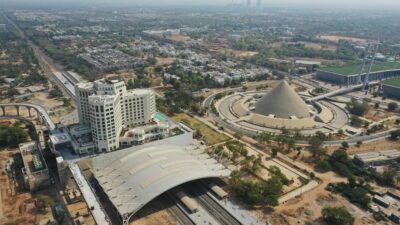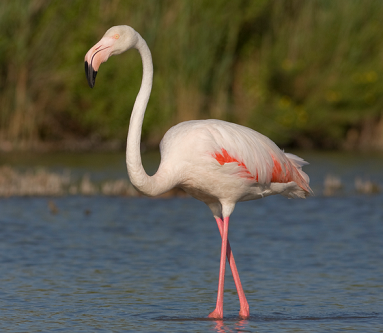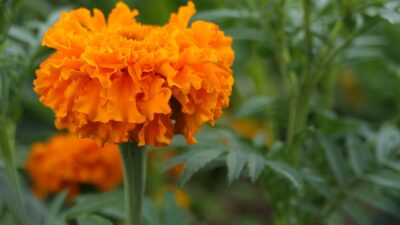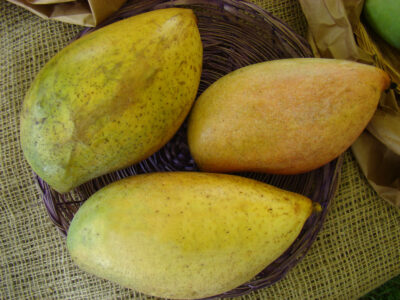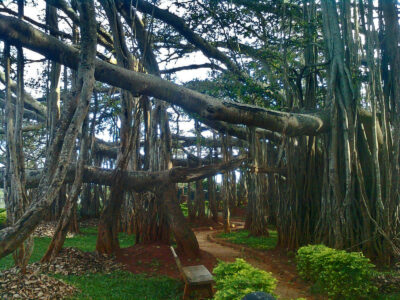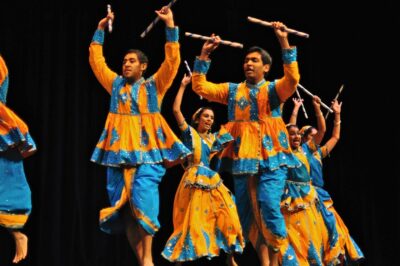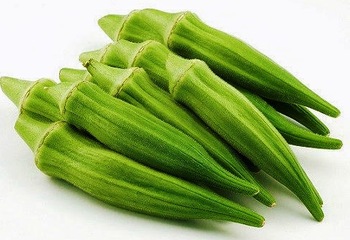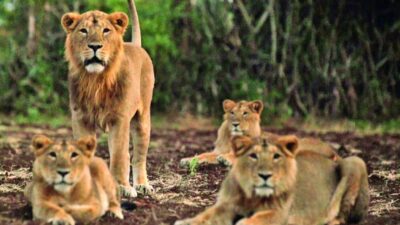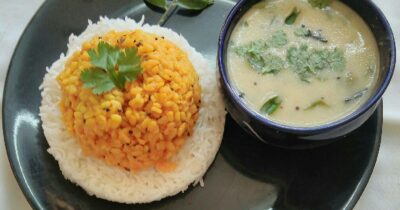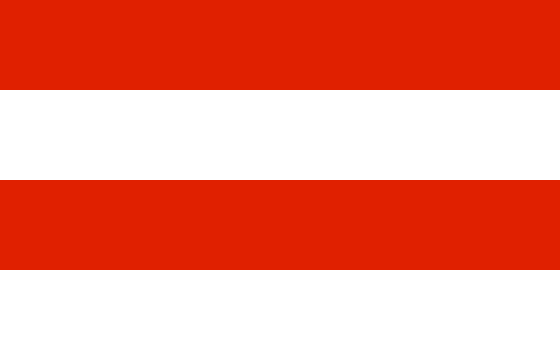State Symbols of Gujrat
Last updated on January 21st, 2023 by Editorial Staff
By | Updated on January 21, 2023
Reviewed by Rittika
Gujrat is one of India’s western states. The name derives from the White Huns’ “Gujara” branch. In terms of land area, it is the fifth-largest Indian state, and in terms of people, it is the ninth-largest. It lies on the Arabian Sea’s western coast and is predominantly bordered to the northwest by Pakistan and to the north, east, and southeast by the Indian states of Rajasthan, Madhya Pradesh, and Maharashtra. Gujarat also shares a tiny portion of its southeastern border with the Indian union territory of Dadra and Nagar Haveli and also surrounds the Indian union territory of Daman and Diu with the Arabian Sea. A few of Gujarat’s well-known rivers include the Narmada River, Mahi River, Sabarmati River, Machchhu River, Rupen River, Hiran River, and Kim River. Gujarati is the state’s official language.
Gandhinagar, on the outskirts of Ahmadabad in north-central India, serves as the country’s capital (Ahmedabad). Shri Bhupendra Rajnikant Patel was sworn in as the 17th Chief Minister, while, Shri Acharya Devvrat, is the 20th Governor of Gujrat.
Demographical Profile
Gujarat’s overall geographic covering is around 196,024 km2, with a population of around 16 lakhs. The literacy rate of 82.4% and the sex ratio of 919 women per 1000 males.
Climate
From November to February (winter months), temperatures in Gujarat typically reach the mid-80s F (about 28 °C), with lows in the mid-50s F (around 12 °C). Summers (March through May) is hot, with highs of over 100 degrees Fahrenheit (38 degrees Celsius) in the daytime and lows in the 90s Fahrenheit (low 30s Celsius) at night.
Wildlife and Natural Vegetation
Only a small percentage of Gujarat is covered in forest, reflecting both human activity and low rainfall. Scrub forests can be found in the northwestern section and over the Kathiawar Peninsula, with babul acacias, capers, Indian jujubes, and toothbrush bushes as the dominant species (Salvadora persica). Deciduous species like teak, catechu (cutch), axlewood, and Bengal kino (butea gum) can be found in various sections of the peninsula and northeastern Gujarat. The wetter southern and eastern slopes have more deciduous forests. Vengai padauk (genus Pterocarpus; resembling mahogany), Malabar simal, and haldu are among the precious timbers they produce (Adina cordifolia). The peninsula’s west shore is noted for algae, while its east coast produces papyrus, or paper plant (Cyperus papyrus).
Rare Asiatic lions (Panthera leo persica) live at Gir National Park in the Kathiawar Peninsula’s southwest corner, while endangered Indian wild asses (Equus hemionus khur) are protected in a sanctuary near the Little Rann of Kachchh. In the winter, several kinds of birds migrate from the Siberian plains and beyond to the Nal Sarovar Bird Sanctuary near Ahmadabad. Among the most prominent species are Saras cranes, Brahmini ducks, bustards, pelicans, cormorants, ibises, storks, herons, and egrets. The Rann of Kachchh is India’s only greater flamingo nesting habitat. Gujarat has good sea and inland fishing. Pomfret, salmon, hilsa (a sort of shad), jewfish (a scianid fish), prawn, Bombay duck (a food fish), and tuna are among the fish caught.
Economy
Agricultural activities in Gujarat have been hampered by unfavorable climatic conditions, the salinity of soil and water, and rocky terrain, but the sector has remained a major component of the state’s economy, employing about half of the workforce. The black soil, mixed red and black soils, residual sandy soils, alluvial soils, saline/alkali soils, lateritic soils, hilly soils, desert soils, and forest soils are the nine categories of soils found in Gujarat. The main food crops are wheat, millet, rice, and sorghum, with rice production concentrated in wetter areas. Cotton, oilseeds (peanuts), tobacco, and sugarcane are the main cash crops. Dairy farming for profit is also significant.
Cultural Heritage (Art, Music, and Cuisines)
The mythology surrounding the Hindu deity Krishna (an incarnation of the god Vishnu) as conveyed in the Puranas, a type of Hindu holy literature, is reflected in much of Gujarat’s culture. The earlier rasnritya and raslila dance traditions honoring Krishna have modern incarnations in the popular dance known as Garba. Bhavai is a popular rural comedic drama that portrays various facets of rural life. Monuments and temples in Somnath and Dwarka in the southwestern portion of the state, Modhera in the north, and Than, Ghumli (near Porbandar), the Girnar Hills, and Palitana in the Kathiawar Peninsula maintain Gujarat’s old architectural style, which is recognized for its luxuriousness and intricacy. A distinct architectural style emerged during the Muslim administration, combining Muslim and Hindu elements. The mosques and tombs of Ahmadabad from the 15th and 16th centuries are examples of this architecture.
Gujarat is well-known for its highly skilled craftsmanship. Surat’s jari (gold and silver embroidery), Jamnagar’s bandhani-work (tie-dyeing) fabrics, and Patan’s patola silk saris (Indian women’s clothes) are all notable items. Idar toys, Palanpur perfumes, and Kanodar hand-loomed items are all well-known products from the northern region. Decorative woodwork featuring tiny temples and mythological creatures is famous in Ahmadabad and Surat.
For men, traditional Gujarati attire consists of a kediya or kurta on top and a dhoti or chorno on the bottom. Gujarati women wear sarees or chaniya Choli.
Rotli, dal or kadhi, rice, and shaak make up a classic Gujarati thali (spicy or sweet dish of combinations of different vegetables and spices). The thali will also include a snack (farsaan) such as dhokla, pathra, samosa, fafda, etc., as well as a sweet (mishthaan) such as mohanthal, jalebi, doodh pak, etc., made from pulses or whole beans (called kathor in Gujarati) such as moong, black-eyed beans, etc. Gujarati food varies greatly in flavor and heat, based on the preferences of a family as well as the Gujarati region to which they belong.
Tourism
Starting from the Great Rann of Kutch to the hills of Saputara, Gujarat is blessed with natural beauty. Gujarat is the only spot in the world where you may see pure Asiatic lions. Hindu craftsmanship blended with Islamic architecture throughout the Sultanate’s reign, resulting in the Indo-Saracenic style. This is how many structures in the state are constructed. Shrimad Rajchandra, Mahatma Gandhi, and Sardar Vallabhbhai Patel, three prominent figures of India’s freedom movement, were born there. In recent years, the Statue of Unity has become one of Gujarat’s most popular tourist attractions. It is the world’s highest statue.
State Information
| Official Language | Gujrati |
| State Rank | 5 |
| Demonym(s) | Gujarati |
| Nickname | Boston of India |
| ISO | IN-GJ |
| Formation Date | 1 May 1960 |
| Coordinates | Lat: 22.2587° N, Long: 71.1924° E |
| Area |
State seal
Motto of Gujrat
State symbols of Gujrat 👇
-
State capitalGandhinagar
-
State birdGreater flamingo
-
State flowerMarigold (galgota)
-
State fruitMango
-
State treeBanyan
-
State danceDandiya Raas
-
State vegetableOkra (Unofficial)
-
State animalAsiatic lion
-
State dishDal or kadhi

